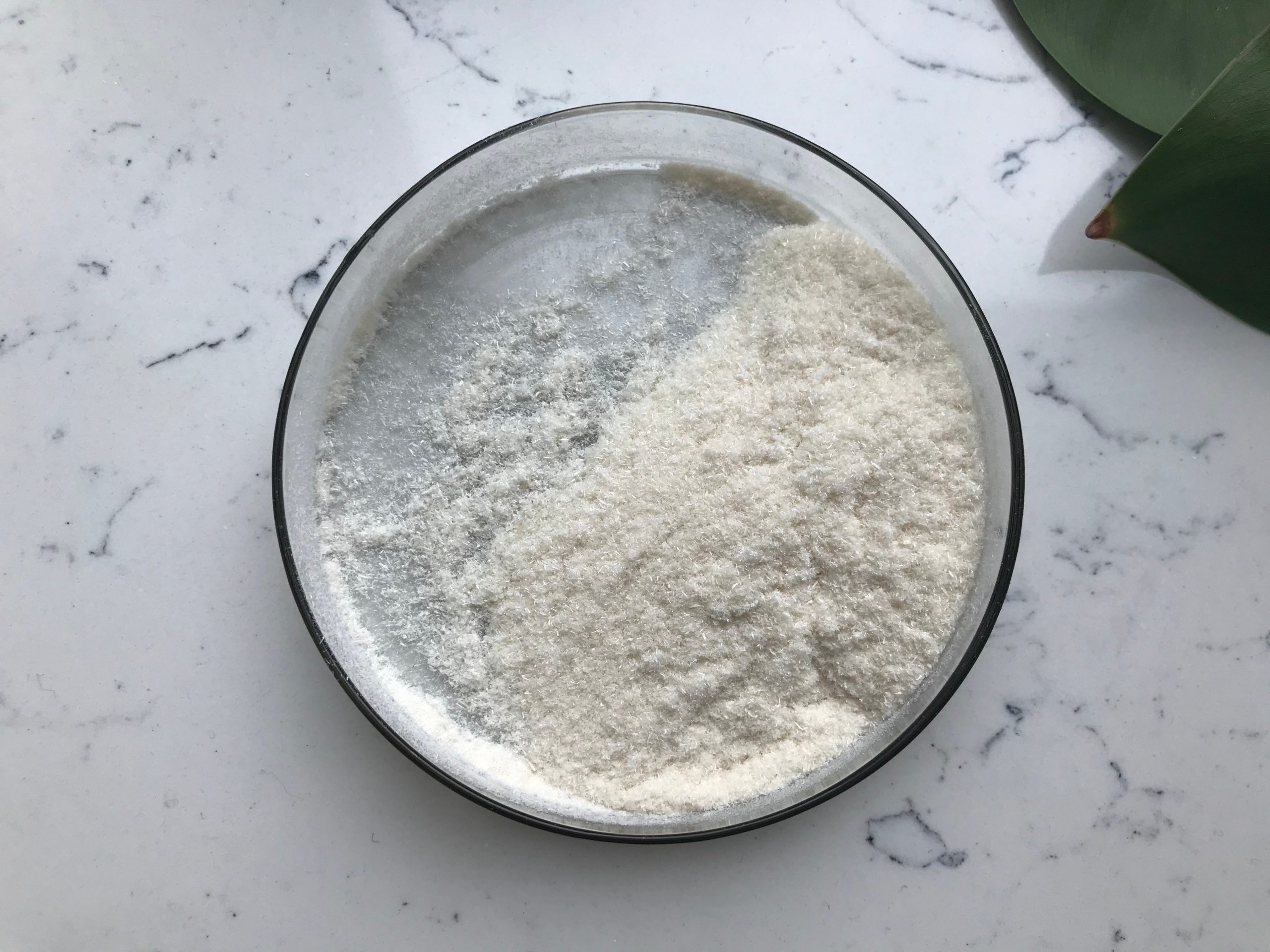Kojic acid is a naturally occurring substance that is often used in skin care products for its skin-lightening and anti-aging properties. Like many skincare ingredients, it has its pros and cons. Here’s an overview of the advantages and disadvantages of using kojic acid:
Pros of Kojic Acid:
- Skin Lightening: Kojic acid is primarily known for its ability to inhibit the production of melanin in the skin, which can help reduce the appearance of dark spots, hyperpigmentation, and melasma. It can be an effective ingredient for achieving a more even skin tone.
- Anti-Aging: Kojic acid also has antioxidant properties that can help protect the skin from damage caused by free radicals. This may lead to a reduction in the signs of aging, such as fine lines and wrinkles.
- Safe for Most Skin Types: Kojic acid is generally considered safe for most skin types, including sensitive skin, when used in appropriate concentrations. However, it’s important to do a patch test before using products containing kojic acid to check for any adverse reactions.
- Alternative to Hydroquinone: Kojic acid is sometimes used as an alternative to hydroquinone, a skin-lightening agent that has been associated with potential side effects like skin irritation and rebound hyperpigmentation in some individuals.

Cons of Kojic Acid:
- Potential Irritation: Kojic acid can be harsh on the skin, especially when used in high concentrations. It may cause redness, stinging, and skin irritation, particularly for those with sensitive skin. It’s important to use products containing kojic acid as directed and gradually introduce them into your skincare routine to minimize the risk of irritation.
- Sensitivity to Sun: Kojic acid can make the skin more sensitive to UV radiation, increasing the risk of sunburn and skin damage. It is essential to use broad-spectrum sunscreen daily when using products with kojic acid to protect your skin from the sun’s harmful effects.
- Slow Results: Compared to some other skin-lightening ingredients, such as hydroquinone, kojic acid may take longer to produce visible results. It requires consistent and prolonged use to see a significant improvement in skin tone.
- Instability: Kojic acid can be unstable in certain formulations and may degrade when exposed to light and air. This can reduce its effectiveness over time, so it’s important to use products with kojic acid that are packaged in opaque containers and stored properly.
- Risk of Allergic Reactions: While relatively rare, some individuals may be allergic to kojic acid and experience adverse skin reactions. If you notice any itching, redness, or discomfort after using kojic acid products, discontinue use immediately.
In summary, kojic acid can be a useful ingredient for skin lightening and anti-aging, but it’s essential to use it cautiously and be aware of its potential drawbacks, especially in terms of skin sensitivity and the need for sun protection. If you’re considering incorporating kojic acid into your skincare routine, it’s advisable to consult with a dermatologist or skincare professional for personalized guidance and product recommendations.
